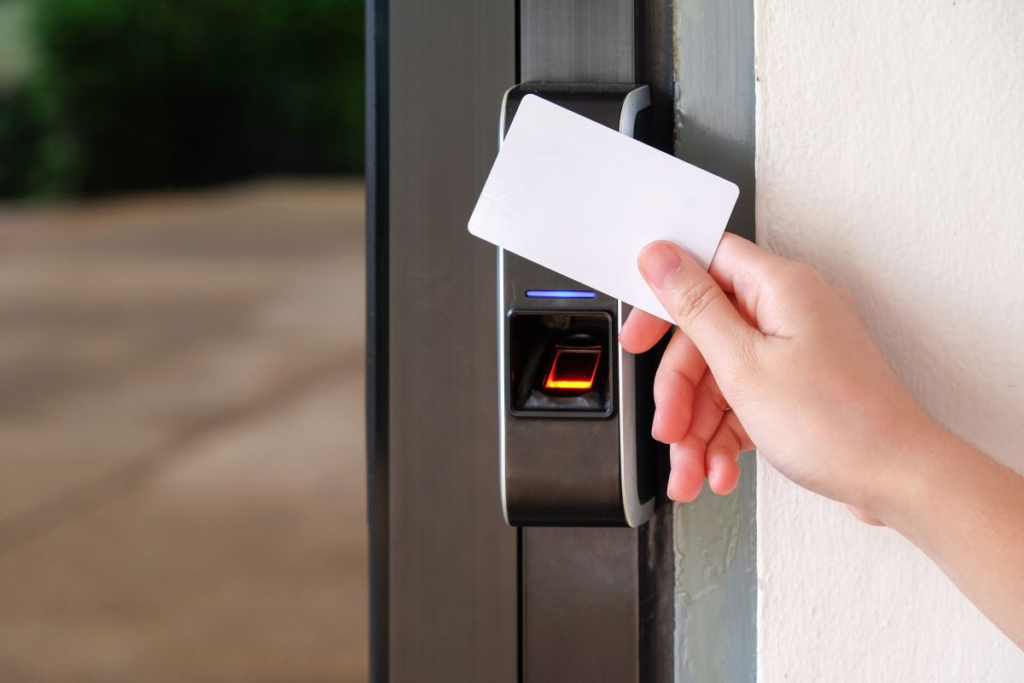
Why the 125 kHz Card Remains a Key Player in Modern Access Control Systems?
Not every access control system needs facial recognition, cloud-based credential syncing, or AI-powered behavior tracking. When it comes to real-world reliability and operational stability, sometimes the most unassuming solution is the best. Enter the 125 kHz card—a piece of technology that has quietly held its ground in the ever-evolving landscape of RFID. These cards are often overlooked due to their simplicity, which makes them powerful in many environments where frictionless, dependable access control is the top priority.
How A 125 kHz Card Works in Low-Frequency RFID Systems
The 125 kHz RFID system’s low-frequency operation is at its core, providing it with unique advantages in real-world environments. Unlike its high-frequency counterparts (13.56 MHz NFC), low-frequency RFID is less prone to signal interference from metals, water, or dense materials. This makes it a reliable option in factories, warehouses, and areas with wet or outdoor conditions, where other technologies may struggle.
The working principle is refreshingly straightforward: when a card approaches a compatible reader, the reader’s electromagnetic field powers the passive chip inside the card. That chip—often an EM4100 card or a T5577—responds by transmitting its unique identifier. There’s no battery involved, no complicated protocols – just a clean handshake between the tag and reader. The system delivers near-instantaneous response times by embracing minimalism, making it ideal for environments where speed and dependability take priority over features.

Practical Applications in Everyday Environments
The continued relevance of 125 kHz cards stems from their seamless integration into various access control use cases. Offices use them to manage employee entry, fitness centers rely on them for member validation, and hotels often issue them for room access due to their cost efficiency and low maintenance demands.
Their performance in high-traffic or interference-heavy environments makes them a preferred choice for parking garages, utility buildings, and even older infrastructure, where modernizing with newer tech could require costly rewiring or hardware replacements. Users in these settings prioritize a consistent tap-and-go experience over storing personal data or managing cloud access.
One particularly convenient form factor is the RFID key fob. These compact alternatives to standard cards offer the same functionality in a more portable, often rugged format. They’re ideal for users who don’t want to carry a wallet or badge but need quick daily access.
125 kHz Card Compatibility and Chipset Flexibility
When planning a 125 kHz access control system, the type of chip used can significantly impact its functionality and flexibility. The EM4100 card, for instance, features a read-only chip known for its stability, making it a staple in fixed-access environments where reprogramming is not necessary. Its popularity stems from its compatibility across legacy systems and basic access setups.
On the other hand, chips like the T5577 offer a reprogrammable solution, allowing administrators to reassign IDs and repurpose cards or fobs as needed. This is particularly useful in dynamic environments—think co-working spaces, temporary events, or facilities with rotating personnel.
Despite these systems’ simplicity, there’s still room for customization. Many providers offer branding, color printing, or encoding services, ensuring your RFID key fob or badge performs reliably and reflects your organization’s identity.

Simplicity as a Security Strategy
Critics of low-frequency RFID often point to its lack of encryption and advanced security protocols. And yes, compared to smart cards or biometric systems, the 125 kHz card is less sophisticated. But this isn’t necessarily a flaw—it’s a feature in the proper context.
In systems where no sensitive data is transmitted or stored, and access is limited to physical spaces rather than digital resources, the simplicity of a 125kHz setup reduces the attack surface. Fewer components can fail, fewer systems need patching, and there are no online portals for hackers to exploit.
Many organizations specifically choose this technology because it minimizes risk by keeping things offline and contained. You’re not trusting a cloud database or an app; you’re trusting a straightforward radio signal that’s been working for decades.
Balancing Legacy with Modern Demand
Newer access control technologies often overlook older systems as they enter the market. However, what is often overlooked in this rush toward innovation is the real-world durability of “legacy” technology. The 125 kHz card, with its decades-long track record, has survived precisely because it continues to meet organizations’ needs without unnecessary excess.
That said, there are ways to modernize without abandoning what already works. For example, pairing a 12 kHz filter with a mobile-enabled front end and integrating it into a broader multi-frequency system offers excellent support and future flexibility.
For companies that value operational stability, long-term compatibility, and low replacement costs, the EM4100 card and RFID key fob remain top-tier choices. Their wide support across global hardware vendors makes them ideal for international rollouts or distributed infrastructure.

Why the 125kHz Card Still Belongs in Modern Access Control
The 125 kHz card might not be flashy, but it’s far from obsolete. In a world of cloud dependencies, firmware bugs, and overcomplicated systems, its offline reliability, low maintenance, and broad compatibility make it a strategic choice, not just a fallback. It’s battle-tested, globally recognized, and still evolving in its deployment methods.


